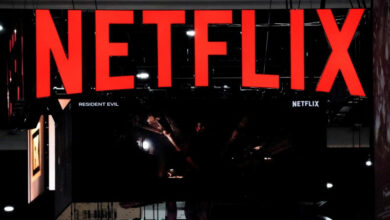$1.7 trillion chip giant Nvidia just gained over $100 billion in value after a blowout quarter, but this mega-bearish analyst says the tech industry is in an AI bubble
Investors have long had a love affair with U.S. tech stocks from the boom cycle of the late ‘90s and early 2000s that famously ended with the dotcom crash, to the AI-induced heights of Nvidia’s current stock rally. Love affairs, though, often end badly, and this one could leave investors nursing both an aching wallet and a broken heart. Artificial intelligence has officially thrust the U.S. tech industry into a bubble and Silicon Valley could be on the precipice of another crash, according to an analyst note from BCA Research chief strategist Dhaval Joshi.
“We are in an AI bubble,” Joshi tells Fortune. “We’ve been wowed by some of the results.”
Few stocks embodied that wow factor like the $1.7 trillion AI chip giant Nvidia, which reported earnings on Wednesday, blowing analyst expectations out of the water. The chipmaker—dubbed “the most important stock on planet earth,” by a Goldman Sachs analyst—reported revenues of $22.1 billion during the last quarter, compared to a forecast of $20.6 billion. Revenues for the company’s data center chips, used in AI models and generative AI applications, reflected increased demand and reached $18.4 billion, up 27% from the third quarter and 409% compared to last year. Stock prices rose 7% in post-market trading, adding over $100 billion of value.
“Accelerated computing and generative AI have hit the tipping point,” said Nvidia founder and chief executive Jensen Huang in a press release. “Demand is surging worldwide across companies, industries and nations.”
While Joshi didn’t comment on Nvidia specifically, its outstanding results can be seen as evidence for his case.
The tech sector is trading at a 75% premium to the global stock market, according to Joshi’s calculations in an analyst note published last week. Its scorching-hot growth became the backbone on which much of the rest of the U.S. stock market’s growth was built and drove the Nasdaq to near record highs last year, just 6.5% off its all-time high in November 2021. In 2023, the so-called Magnificent Seven, which comprise Nvidia, Apple, Microsoft, Alphabet, Meta, Amazon, and Tesla, contributed two thirds of the S&P 500’s total market gains.
And while those gains are impressive and remunerative for savvy investors, they’re unsustainable, according to Joshi.
Unlike Nvidia, some companies won’t be able to live up to the lofty expectations the market sets. That could spell trouble because valuations and stock prices are often measured against expectations as much as they are actual results. If the major tech companies that make up much of the sector’s (and the economy’s) growth miss out on analyst expectations they could drag others down with them. While he cautions against underestimating AI as a whole, Joshi believes the market is pricing in far too much productivity growth from the new technology. And when new innovations fail to live up to those expectations the market will punish the companies that made them.
“Because these handful of stocks have become such a massive percentage of the market cap, any disappointment there is mathematically going to have an impact on the overall index,” Joshi says.
In order for the U.S. tech sector to avoid bubble territory, it would have to continue trading at a 10% premium to the market—a scenario which Joshi sees as unlikely.
Joshi doesn’t blame the market for valuing tech companies so highly. In fact, they’ve proven their worth over the last 10 years by achieving stellar results time and time again. In the last decade the stocks of premier tech firms have soared. For example, since February 2014 Nvidia’s stock has risen 14,927%, Microsoft’s 964%, and Apple’s 875%. The numbers pale in comparison to the still-robust 163% the S&P 500 returned over the last 10 years. Even though he doesn’t believe it will continue, he says it is rational for the market to keep pricing in more explosive growth in tech.
“If you get very strong earnings growth, for one or two years, the market thinks of it the other way: ‘This can’t be sustained.’ So if anything, you give it a low valuation, because you say these are abnormally high earnings. But if the market sees 10 years of outstanding performance it no longer considers those results abnormal, coming to expect them in perpetuity, Joshi says.
For Joshi, though, the last 10 years of blockbuster earnings growth were, in fact, abnormal. In large part because the bulk of that growth was a result of the network effect, which allowed a select few firms to balloon in size and effectively gain control of a market. Amazon captured the market for online shopping, Google did the same for search, and Meta cornered the market in online communication, Joshi writes in his note.
“Once you have networks, you have winners and losers,” he says. “Those winners become natural monopolies, and if you’re a natural monopoly, then you’re in a very strong position to grow your profits.”
Without a clear indication that the network effect will translate to the world of AI, those companies won’t have the same dominant position, Joshi argues. “The market is saying, ‘hey the baton is going to be passed on now to generative AI and that will continue the trend for the next five to 10 years.’ I’m very cynical about that because there is no network effect in generative AI.”
There is the possibility that some especially popular AI tools could see a network effect if they attract more users because they’ll be able to train themselves on all the tasks they get asked to perform.
Even without AI it seems like the benefits of the network effect could be reduced in the near future because of a push from elected officials to regulate Big Tech. “The Web 2.0 revolution has reached its limit because of consumer backlash and much harder, tougher regulation about what data you can collect and how you can use it.”
In Europe, the EU already passed several landmark pieces of legislation meant to break up some of the power tech giants like Apple and Alphabet already had on the market. While in the U.S. despite there being no national privacy law there is an unprecedented level of bipartisan and public support for a series of new laws that would limit the amount and type of data that tech companies can collect on users.
But despite the hurdles Joshi sees on the horizon for tech, he doesn’t anticipate the whole sector will come crashing down as it did in the dotcom bust. In fact, it will continue to outpace the overall market just at a slower pace. That could still mean tough losses for investors, especially as the market eventually readjusts for a tech sector that no longer delivers hundredfold returns.
To be sure, whether or not the market is in the midst of an AI bubble is still hotly debated. Joshi isn’t alone in thinking there is one. Morgan Stanley cautioned against racing headfirst into AI, lest investors not have an adequate lay of the land before the bubble bursts. Meanwhile Goldman Sachs and others argue that soaring returns aren’t a bubble, just the market rewarding the future of technology.
As for what investors should do to mitigate the risks of a possible AI bubble, Joshi has some simple advice: invest in other parts of the market like healthcare and luxury goods.
Subscribe to the Eye on AI newsletter to stay abreast of how AI is shaping the future of business. Sign up for free.


